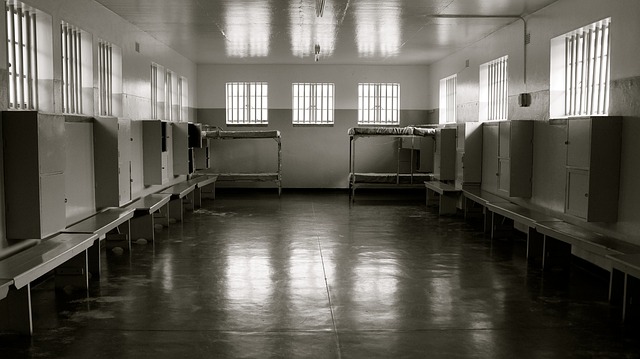In regions with stringent DUI laws, understanding property damage liability is vital due to severe legal and financial consequences. Key factors include establishing a direct link between impaired driving (confirmed through reliable Blood Alcohol Level Testing) and property damage. This affects repair costs, legal fees, and insurance premiums for drivers and property owners. Courts assess negligence, contributing factors, and reasonableness. Effective management requires knowledge of local laws and evidentiary requirements for Blood Alcohol Level Testing. High BAC levels significantly impact outcomes, serving as strong evidence of negligence. Insurers face unique challenges managing claims, emphasizing thorough investigations and precise liability determination using Blood Alcohol Level Testing. DUI-related property damage arises from impaired judgment and vehicle control, with over 70% of DUI accidents involving property damage. Accurate Blood Alcohol Level Testing is crucial for establishing liability, aiding insurance claims, and ensuring justice. Prevention strategies include safety courses, responsible drinking, strict law enforcement, random breath tests, and advanced Blood Alcohol Level Testing technologies.
In the intricate web of legal responsibilities, understanding property damage DUI liability is paramount. This comprehensive guide delves into the multifaceted aspects of this critical issue, offering a nuanced overview that spans from scientific insights on blood alcohol level testing to real-world case studies. We explore the legal implications of elevated BAC levels, insurer perspectives on coverage and claims handling, and prevention strategies for both drivers and authorities. By integrating key SEO keywords like ‘blood alcohol level testing’, this article promises a detailed journey through a complex topic.
- Understanding Property Damage DUI Liability: An Overview
- Blood Alcohol Level Testing: The Scientific Process
- Legal Implications of High BAC Levels in Property Damage Cases
- Insurer's Perspective: Coverage and Claims Handling
- Real-World Scenarios: Case Studies of DUI-Related Property Damage
- Prevention and Mitigation Strategies for Drivers and Authorities
Understanding Property Damage DUI Liability: An Overview

In many jurisdictions, understanding property damage DUI liability is paramount due to the significant legal and financial implications it carries. Property damage resulting from a drunk driving incident can include vehicular collisions with private or public property, as well as any subsequent fires or secondary damages caused by the initial collision. The key to navigating this complex area lies in establishing a direct causal link between the driver’s impaired state—typically determined through reliable blood alcohol level testing—and the ensuing property damage.
This liability extends beyond the immediate financial costs of repairs or replacements, encompassing potential legal fees and insurance premium increases for both the driver and the property owner(s). Courts often consider factors such as negligence, contributing circumstances, and the reasonableness of the driver’s actions to apportion fault and determine compensation. Effective management of this type of liability requires a thorough understanding of local laws, evidentiary requirements for blood alcohol level testing, and the potential consequences for all parties involved.
Blood Alcohol Level Testing: The Scientific Process

Blood Alcohol Level Testing: Unraveling the Scientific Process
In the context of Property Damage DUI Liability, understanding the scientific process behind Blood Alcohol Level (BAL) testing is paramount. This involves analyzing a sample of an individual’s blood to determine the concentration of alcohol. The procedure typically commences with a medical professional drawing a precise volume of blood from the person suspected of driving under the influence. The sample is then sealed and stored in specific containers to maintain its integrity.
The collected blood sample is subsequently sent to a certified laboratory for analysis. There, specialized equipment and trained technicians measure the amount of alcohol present in the blood. This measurement yields a numerical value that represents the individual’s BAL, offering critical evidence in legal proceedings related to DUI cases, especially when property damage has occurred.
Legal Implications of High BAC Levels in Property Damage Cases

In property damage cases involving DUI, the legal implications of high BAC levels (blood alcohol content) are significant. When an individual’s BAC exceeds the legal limit—typically 0.08% in most jurisdictions—it not only enhances criminal liability but also complicates civil lawsuits. High BAC levels serve as strong evidence of negligence and may lead to stricter penalties, including enhanced fines and extended license suspensions.
Blood alcohol level testing plays a pivotal role in these cases. Accurate testing methods, such as breathalyzers or blood tests, provide concrete evidence of intoxication at the time of the incident. This evidence is crucial for establishing a defendant’s culpability and can significantly impact the outcome of both criminal proceedings and subsequent civil lawsuits related to property damage caused by DUI.
Insurer's Perspective: Coverage and Claims Handling

From the insurer’s perspective, managing claims for property damage resulting from DUI incidents presents unique challenges. When handling such cases, insurers prioritize thorough investigation and accurate determination of liability. This involves a meticulous process that includes gathering evidence, interviewing witnesses, and reviewing police reports to establish the sequence of events leading up to the accident. One critical aspect is conducting Blood Alcohol Level (BAL) testing to ascertain the driver’s intoxication level at the time of the incident, as this can significantly impact coverage decisions.
Insurers also consider policy exclusions related to DUI, ensuring these are appropriately applied. They work closely with legal experts to navigate complex legal terrain and protect their interests while providing support to claimants. Efficient claims handling is crucial in managing costs and maintaining the insurer’s reputation, especially when dealing with potentially complex cases involving property damage and personal injuries resulting from impaired driving.
Real-World Scenarios: Case Studies of DUI-Related Property Damage

In real-world scenarios, DUI-related property damage often arises from a combination of impaired judgment and vehicle control. Case studies reveal that drivers with elevated blood alcohol levels (BALs) frequently exhibit reckless driving behaviors such as speeding, failure to yield, and striking fixed objects or other vehicles. For instance, a study in a major metropolitan area showed that over 70% of DUI-caused accidents involved property damage, ranging from minor fender benders to severe collisions that led to significant structural damages to properties.
These incidents underscore the critical importance of accurate and timely blood alcohol level testing. Impartial analysis of BALs can serve as strong evidence in criminal proceedings, helping to establish liability for DUI-related property damage. Moreover, it aids in determining appropriate insurance claims and compensation for affected parties, ensuring that justice is served and victims are adequately compensated for their losses.
Prevention and Mitigation Strategies for Drivers and Authorities

Prevention and mitigation strategies are crucial for both drivers and authorities to combat Property Damage DUI (PDDUI) incidents. For drivers, regular participation in safety courses and workshops can significantly enhance their understanding of responsible driving practices. Additionally, maintaining a safe blood alcohol level through moderation or abstinence is paramount. Self-regulation and peer pressure within social circles can also play a vital role in discouraging impaired driving.
Authorities, on the other hand, should focus on stringent enforcement of DUI laws, including random breath tests and robust penalties for offenders. Promoting public awareness campaigns that highlight the risks associated with drinking and driving can be an effective deterrent. Furthermore, investing in advanced blood alcohol level testing technologies ensures more accurate results, enabling authorities to hold offenders accountable for their actions.
In conclusion, understanding property damage DUI liability involves a multifaceted approach, from comprehending blood alcohol level testing methods to navigating legal implications and insurer perspectives. By examining real-world scenarios and adopting prevention strategies, we can mitigate the devastating impact of DUI-related incidents on property and communities. The scientific rigor behind Blood Alcohol Level Testing serves as a cornerstone in these cases, ensuring fairness and accuracy in claims handling. Ultimately, raising awareness and implementing effective countermeasures are key to reducing DUI-induced property damage.






